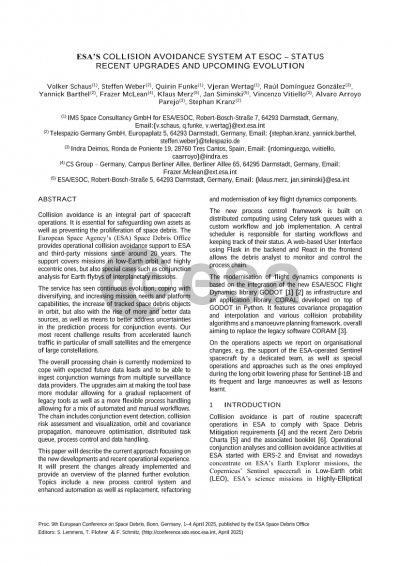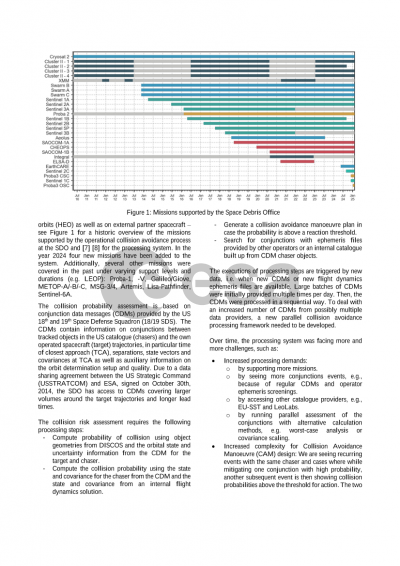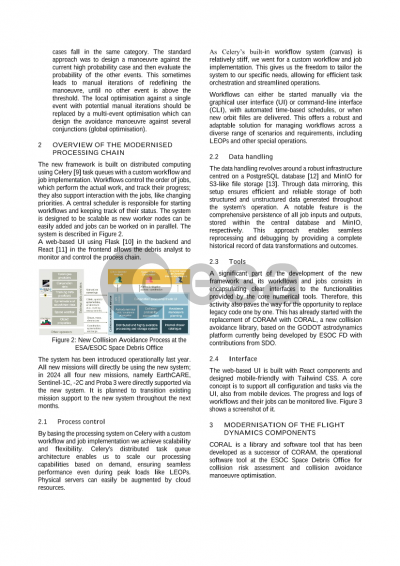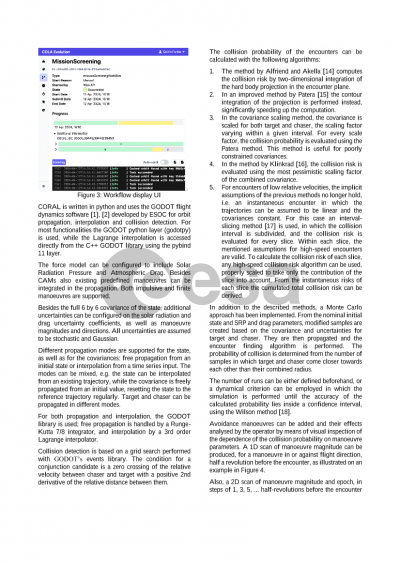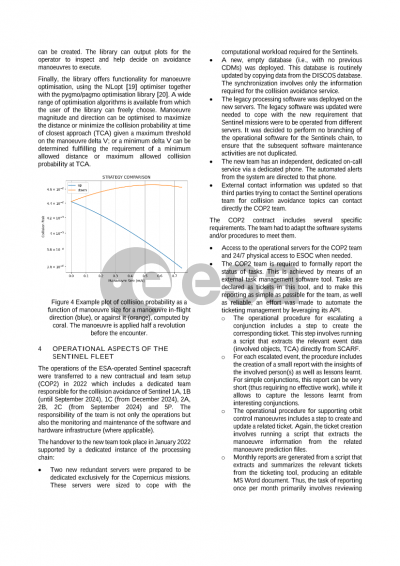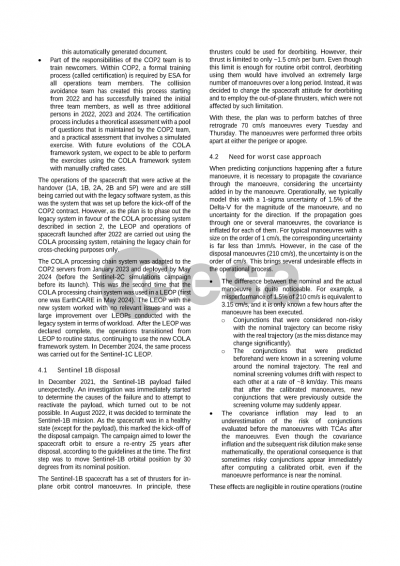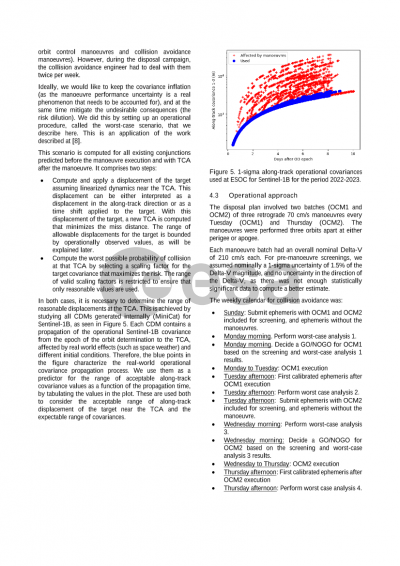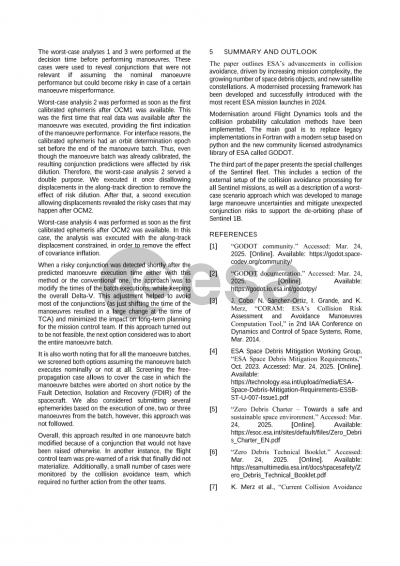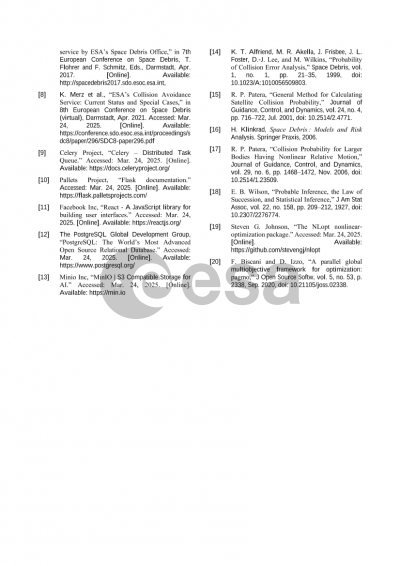Document details

Abstract
Collision avoidance is an integral part of spacecraft operations. It is essential for safeguarding own assets as well as preventing the proliferation of space debris. The European Space Agency’s (ESA) Space Debris Office provides operational collision avoidance support to ESA and third-party missions for around 20 years. The support covers missions in low-Earth orbit and highly eccentric ones, but also special cases such as conjunction analyses for Earth flybys of interplanetary missions.
The service has seen continuous evolution, coping with diversifying, and increasing mission needs and platform capabilities, the increase of tracked space debris objects in orbit, but also with the rise of more and better data sources, as well as means to better address uncertainties in the prediction process for conjunction events. Our most recent challenge results from emergence of large constellations in close orbital regions and the acceleration of the number of small satellites in the space traffic.
The overall processing chain is currently modernized to cope with expected future data loads and to be able to ingest conjunction warnings from multiple surveillance data providers. The upgrades aim at making the tool base more modular allowing for a gradual replacement of legacy tools as well as a more flexible process handling allowing for a mix of automated and manual workflows. The chain includes conjunction event detection, collision risk assessment and visualization, orbit and covariance propagation, manoeuvre optimisation, distributed task queue, process control and data handling.
This paper will describe the current approach focusing on the new developments and recent operational experience. It will present the changes already implemented and provide an overview of the planned further evolution. Topics include a new process control system and enhanced automation as well as replacement, refactoring and modernisation of key flight dynamics components.
The new process control framework is built on distributed computing using Celery task queues with a custom workflow and job implementation. A central scheduler is responsible for starting workflows and keeping track of their status. A web-based UI using Flask in the backend and React in the frontend allows the debris analyst to monitor and control the process chain.
The modernisation of flight dynamics components is based on the integration of the new ESA/ESOC Flight Dynamics library GODOT as infrastructure and an application library CORAL developed on top of GODOT in Python. It features covariance propagation and interpolation and various collision probability algorithms and a manoeuvre planning framework, overall aiming to replace the legacy software CORAM.
On the operations aspects we report on organisational changes, e.g. the support of the ESA-operated Sentinel spacecraft by a dedicated team, as well as special operations and approaches such as the ones employed during the long orbit lowering phase for Sentinel-1B and its frequent and large manoeuvres as well as lessons learnt.
Preview
